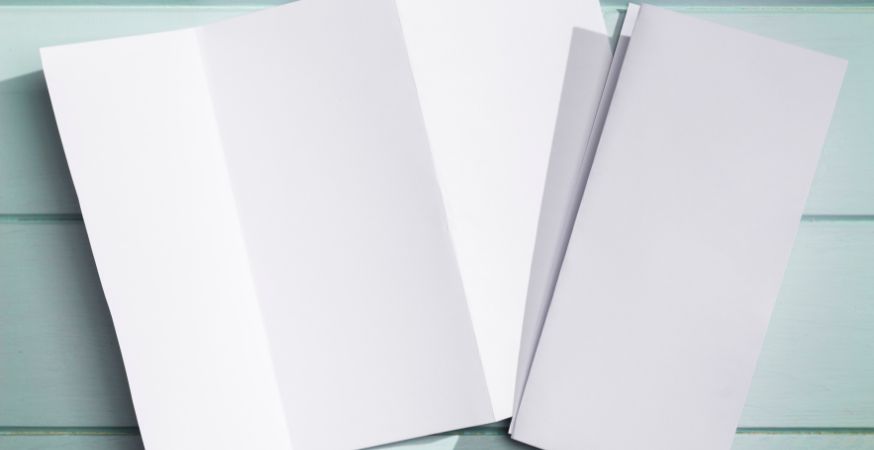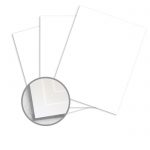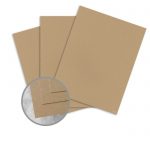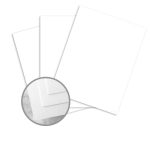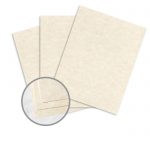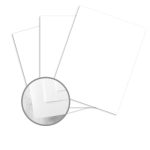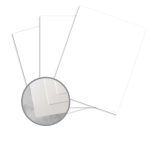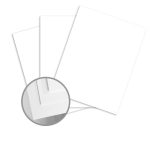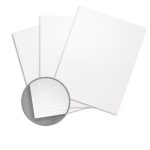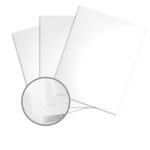When you’re designing a brochure, the way it folds isn’t just a functional choice—it’s a creative decision that shapes how your message is delivered and how your brand is perceived.
Whether you’re sharing detailed information, planning a sleek product launch, or creating a vibrant event handout, choosing the right brochure fold is key to making the right impression.
There are several different brochure styles to choose from, from a simple bi-fold to an elaborate roll fold. But here’s what many guides about how to fold a brochure leave out:
Your brochure fold should work in harmony with your content and your paper stock.
The tactile feel, weight, and finish of the paper can enhance or hinder your chosen brochure style. And different brochure folds evoke different emotions, helping reinforce your brand identity before anyone even reads the first word.
In this guide, we’ll walk you through the most common brochure folds, explain what each style communicates, and show you how to choose the best paper to bring it all together. Whether you’re new to brochure design or looking to elevate your next print piece, keep reading for practical tips and expert insights that go beyond the basics.
Choosing a Brochure Fold: Start with Your Message and Content
Before choosing your paper or brochure fold, consider the story your brochure needs to tell. Your message should guide the structure, not the other way around.
Different brochure styles support different types of communication. Some folds are linear, ideal for walking readers through a step-by-step process. Others are more modular or dramatic, perfect for creating moments of surprise or organizing content into distinct sections.
Here’s how to match your message to the right format:
- Trifold: A versatile classic. Great for brochures that need clear sections (think: services, pricing, contact info). Best for general marketing, menus, or quick overviews.
- Z-Fold: Similar to a trifold, but with panels that open like an accordion. Offers a more modern look and is ideal for guides, process breakdowns, or product comparisons.
- Gatefold: Opens like doors to reveal a center spread. This fold is all about the reveal, making it perfect for luxury products, promotions, or anything with a strong visual impact.
- Accordion Fold: Best when you have lots of panels or steps to display. Great for maps, timelines, or storytelling across multiple scenes.
- Half-Fold or Bi-Fold: Clean and simple, best for brochures that function like mini booklets—ideal for programs, portfolios, or formal presentations.
- Roll Fold: Opens one panel at a time in a layered sequence. Ideal for brochures that present information in a specific order—great for step-by-step guides, onboarding materials, or product walkthroughs.
Once you know what you’re saying and how you want it delivered, you’ll be better equipped to make smart paper and fold decisions that elevate your brochure from basic to bold.
Matching Your Brochure Fold Style to Brand Personality
The way your brochure opens, unfolds, and presents information sends subtle cues about your brand’s personality and values. That’s why choosing the right brochure fold isn’t just about design—it’s a branding decision.
Here’s what some of these common brochure styles say about your brand:
- Trifold: This go-to format is practical and familiar, signaling trust and reliability. It’s perfect for businesses that need to communicate a lot of information in a well-organized, easy-to-follow format. Great for service providers, small businesses, or local tourism guides.
- Z-Fold: With its clean lines and modern feel, the z-fold evokes precision and innovation. It’s a great choice for tech companies, consultants, or any brand that values structure and clarity while still feeling contemporary.
- Gatefold: Elegant and attention-grabbing, gatefolds create a sense of drama and sophistication. Often used by luxury brands, real estate agencies, or high-end product launches, this fold makes an impact, especially when paired with heavier, premium paper.
- Accordion Fold: Energetic and dynamic, accordion folds bring a playful vibe and keep the reader engaged, panel by panel. This makes them ideal for events, maps, illustrated guides, or youth-oriented marketing campaigns.
- Half-Fold (Bi-Fold): Simple, traditional, and effective. The half-fold suits brands that want to convey professionalism and stability, such as financial institutions, healthcare providers, or educational organizations.
- Roll Fold: Layered and intentional, the roll fold offers a sense of guided discovery. It works beautifully for storytelling brands that want to walk readers through a journey, such as nonprofits, wellness brands, or onboarding kits.
By thoughtfully selecting a fold that reflects your brand’s tone and values, you’re turning your brochure into a powerful piece of communication, visually and emotionally. And when paired with the right paper stock, that impression only deepens.
How to Choose the Right Paper for Your Brochure Folds
Paper texture, weight, and finish all influence how a brochure feels and how your content is perceived. Whether you’re aiming for elegance, energy, or eco-conscious appeal, your paper choice should reinforce the tone of your brand and the function of your fold.
Here’s how to align paper type with both brochure folds and your overall message:
Cover Stock or Card Stock
Best for: Simple folds like half-folds or gatefolds
Thicker cover stocks, such as 80 lb or 100 lb cover or heavier, offer structure and a premium feel. They’re perfect for brochures that need to make a bold impression—like luxury menus, product showcases, or formal event programs. These papers work well with simple folds that don’t require intricate manipulation, helping avoid cracking and keeping edges crisp. If you do need to fold heavy cover stock, pre-scoring your paper will prevent cracking.
Text Weight Paper
Best for: Complex folds like accordion or roll folds
Lighter, more flexible stocks such as 70 lb to 100 lb text are ideal for multi-panel designs that require smooth folding. If your brochure includes step-by-step instructions, maps, or educational content, a text-weight paper ensures the folds stay neat and easy to handle, even when there are many of them.
Uncoated Stock
Best for: Brands with a handmade, natural, or eco-conscious feel
Uncoated paper has a soft, tactile texture that feels organic and understated. It’s a great choice for artisanal brands, nonprofits, wellness companies, or any business that wants to convey warmth and authenticity. It also reduces glare and is easy to write on—ideal for text-heavy or interactive brochures, or mailers with handwritten notes.
Glossy or Coated Paper
Best for: Modern brands and vibrant, image-rich designs
Coated stocks have a smooth, shiny surface that enhances color contrast and image sharpness. If your brochure is highly visual—think photography portfolios, retail catalogs, or tech marketing—glossy paper will help your graphics stand out. The sleek feel also aligns well with contemporary, polished branding.
PAPER PRO TIP: Always fold your brochure with the grain of the paper—folding against the grain increases the risk of cracking, especially with coated or heavy stocks. And for thicker papers or coated sheets, scoring before folding is essential to keep edges clean and professional.
Brochure Folds at a Glance: Choose the Right Style for Your Message and Paper
Paper Pro Tip: Always Test Your Brochure Fold First
Even when you’ve chosen the perfect brochure fold and selected paper that complements your message, it’s essential to test everything before committing to a large print run. That’s where dummy mockups come in—simple prototypes using your chosen paper and fold configuration.
Here’s why testing matters:
- Folds don’t always behave the way you expect. Paper thickness, grain direction, and finish all affect how cleanly a brochure folds. For example, a gatefold on heavy cover stock might need scoring, or a roll fold might need narrower panels.
- Coated papers can crack. Especially on thicker stocks, folds on coated paper can split or flake if not properly scored. Testing reveals where adjustments are needed.
- Your message might need realignment. Seeing your design in folded form helps you spot layout issues or text that gets lost in creases or seams.
At The Paper Mill Store, you can order low-cost paper samples of the exact stock you’re considering so you can test how your folds will perform before placing a full order. Whether you’re printing on coated, uncoated, textured, or specialty papers, testing helps ensure your final brochure looks and feels exactly as you envisioned.
Plus, all samples ship free, so it’s easy and affordable to compare options, test them yourself, and feel the difference in hand.
Fold Smarter, Print Better: Finishing Services for Perfect Brochure Folds
The right brochure doesn’t just communicate information—it creates an experience. From the fold you choose to the paper it’s printed on, every detail contributes to how your message is delivered and how your brand is perceived. Whether you’re aiming for classic, creative, or high-impact, choosing the right brochure style and paper combination ensures your piece feels just as intentional as it looks.
But great design only goes so far without proper execution—and that’s where paper finishing comes in. At The Paper Mill Store, we make it easy to bring your brochure to life with professional finishing services—including precision scoring to ensure smooth, crack-free folds. Especially on heavier or coated stocks, scoring makes a world of difference in the final product.
Need to test your design first? Order affordable paper samples (always with free shipping) to feel the paper and test folds before you buy.
From paper selection to finishing touches, we’re here to help you create brochures that leave a lasting impression. Explore our scoring services today and elevate your next project with confidence.

